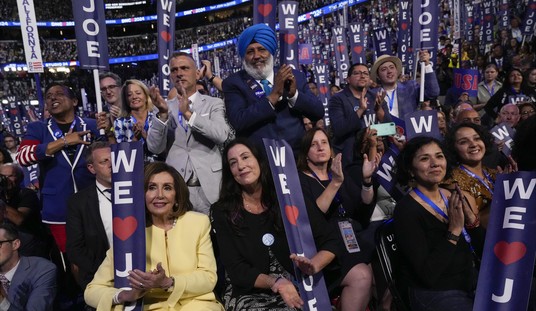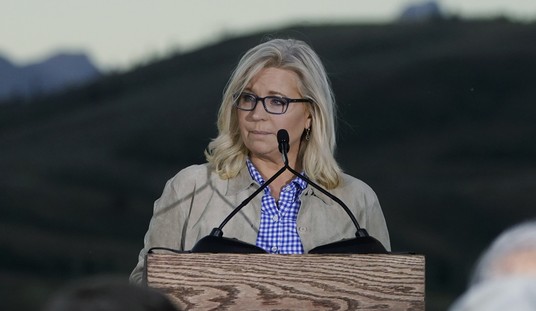On Memorial Day, The New York Times ran an op-ed attacking America as fundamentally racist. On a day commemorating the American soldiers who gave up their lives to protect the United States, America’s newspaper of record attacked a generic kind of American law as a hidden tool for racism.
“The selective enforcement of minor ordinances, as many critics note, performs the same work today that segregation laws did in the past,” argued Andrew W. Kahrl, an associate professor of history and African-American studies at the University of Virginia. “But it would be inaccurate to call this a new form of Jim Crow. What it is, rather, is a form of Jim Crow that whites in the North have been developing since the early 1900s.”
In March, Kahrl published a book about segregation on Connecticut’s beaches in the 1960s and 1970s called “Free the Beaches: The Story of Ned Coll and the Battle for America’s Most Exclusive Shoreline.” The author argued that public decency laws have often served as a cudgel to foster discrimination against black people, and that even today those laws have that same effect.
Kahrl pointed to the case of the Starbucks manager in Philadelphia who called the cops after a pair of black men asked to use the restroom before purchasing a drink, and to the white woman who called the police on a black family that was out grilling at Lake Merritt Park in Oakland, Calif.
“In both instances, the victims were accused of violating laws or rules governing conduct in commercial establishments and public spaces. In the first case, it was for trespassing or loitering. In the second, it was for using a charcoal grill outside of the designated areas,” the professor wrote.
Then came the crux of the argument:
“Quality of life” laws serve as a potent instrument of racial segregation. They provide commercial establishments, law enforcement officers and everyday citizens with tools enabling them to police racial boundaries while at the same time claiming to simply be upholding the law.
To be fair, the case in Oakland tragically does seem like a racist attempt to use a local ordinance in that way. An angry white woman called the police because a black family was out grilling with charcoal in an area not designated for the purpose. At one point in a video of the interaction, the woman complains about another “n**ger” arriving at the scene, and later admits that her complaint has nothing to do with cleanliness.
Of this case, Kahrl noted that “plenty of white people have barbecued, blasted music and drunk alcohol at that same Oakland park, without anyone calling the police,” and it does indeed seem that the woman’s complaints had little merit and were rooted in racism.
When the police arrived, however, they arrested no one and did not file any charges. If the law existed for the nefarious reasons Kahrl suggested, and if it was intended to be implemented in a racist way, this situation may not have defused the way it did. Indeed, this case seems to illustrate that racist complaints will fall on deaf police ears.
Similarly, the Starbucks scandal has also been overblown. Two black men entered a Starbucks in Philadelphia and sat down without purchasing anything. Later, one of them asked to use the restroom. Restrooms are reserved for customers, so this was a breach of Starbucks policy. While the staffer arguably should not have called the police, she was within her rights to ask the man to buy something before using the facility. The non-customer refused to leave, and remained confrontational in front of police.
“Like most middle-aged white people, I have spent countless hours in Starbucks without buying anything,” Kahrl confessed. This statement ignored the key issue, however. People of all races have spent time in Starbucks without buying anything, but they know that Starbucks reserves its restrooms for paying customers. While calling the police may have been an extreme overreaction, the man demanding to use the restroom was in fact abusing the system.
In his New York Times article, Kahrl noted the subtle racism of the North. “As white segregationists in the South were placing ‘whites only’ signs in the windows of restaurants, in the North, more enlightened (or, rather, more savvy) white proprietors and public officials realized that rules restricting public spaces to local residents and the strict but selective enforcement of laws against things like disorderly conduct and loitering could be used to impose racial segregation,” he wrote.
He mentioned the story of his book: the public beaches. In the Northeast, “towns devised elaborate, and ostensibly colorblind, procedures for determining who could access public shores, and what they could bring and do once inside, and then proceeded to enforce them for black and brown people only.”
These things did happen, and the North was not immune from racism. It is important for Americans to examine this history, to learn from it, and to dedicate themselves to true colorblind fairness.
“Most white Americans prefer to consign such naked acts of discrimination to a shameful past that we have supposedly overcome,” Kahrl added. “But in light of these recent incidents, it would be more accurate to call the forms of Jim Crow that prevailed in the Northeast in the early- to mid-20th century the cutting edge in technologies of exclusion, a sign of things that were to come.”
Neither of the two situations Kahrl cited proves a deep-seated racism in American society and law. The woman in Oakland seems to have tried to use a local ordinance to segregate blacks from whites — and to have utterly failed. The Starbucks manager, on the other hand, merely went too far in applying a policy the black men in Philadelphia were violating.
The historian wrote that “it will take more than sensitivity-training sessions and the public shaming of racist, hypervigilant white women to dismantle today’s system of segregation.” This concluding statement, a clear reference to Tuesday’s anti-bias training at Starbucks, seemed timed to warn that the training would not be enough.
Even so, The New York Times decided to run this story on Memorial Day, a day dedicated to remembering the American soldiers, sailors, airmen, and Marines who gave their lives to defend this country. By attacking American law and society as fundamentally racist, the Times attacked the legacy of American freedom — and the two isolated incidents Kahrl referenced do not even prove his point about ingrained racism!
Racism and a push toward segregation may still exist in America, but the United States has long been dedicated to equal justice for all. Some issues, such as criminal justice reform, indeed revolve around achieving this justice, but Memorial Day is not a time to attack the supposedly racist roots of America. Rather than wait until Tuesday, the Times ran Kahrl’s article on the holiday dedicated to remembering America’s fallen heroes.
Racism may still be a problem in America today, but reading society-wide racial segregation into two isolated incidents is not only sloppy but an insult to the real progress America has made since the 1970s. The timing is particularly noxious, coming on Memorial Day.
Americans need to wrestle with the history in Kahrl’s book, but these two recent incidents do not back up his argument. Worse, the Times chose a particularly bad time to run the article.









Join the conversation as a VIP Member